Manga Friday: As Different As Possible

I’ve generally tried to organize the weekly columns around some sort of theme, but sometimes themes just serve to hide the variety and depth of the comics world (whatever country it might be from). So, this week, I picked three books with nothing at all in common (except a Japanese origin), just because:
Nightmares for Sale, Vol. 1
By Kaoru Ohashi
Aurora, November 2007, $10.95
Nightmares for Sale is an old-fashioned kind of horror story, with two enigmatic characters – they appear to be a grown man (Shadow) and a young girl (Maria), but she’s older than he is – who run a store that’s usually a pawnshop. Nothing at all good can happen when they enter your life, though they usually don’t seem to be directly responsible.
Each story in this volume has a different set of characters – usually teenage girls, or the kind of adults that teenage girls want to become – who meet the pawnshop owners, and then come to nasty ends. A bullied girl triggers a curse on the friendship rings her tormentors made her buy for all of them, and nastiness follows. A model wants to appear beautiful in photographs, and gets exactly what she asked for…but no more and no less. A young woman meets an abused boy in the street, and learns that their connection is much deeper than she imagined. A young boy tries to pawn his baby sister. And so on.


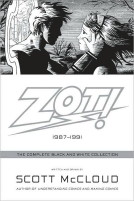
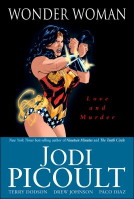 DC Comics got a lot of press last year when they signed up bestselling novelist Jodi Picoult to write their monthly [[[Wonder Woman]]] series – gallons of ink about her being the first female “regular writer” on the series, and about how this would finally catapult WW into the position DC keeps insisting she already has: a central, iconic figure whose comics people actually buy and read.
DC Comics got a lot of press last year when they signed up bestselling novelist Jodi Picoult to write their monthly [[[Wonder Woman]]] series – gallons of ink about her being the first female “regular writer” on the series, and about how this would finally catapult WW into the position DC keeps insisting she already has: a central, iconic figure whose comics people actually buy and read. Poking through the stack of manga to be reviewed, earlier this week, I noticed several books featuring characters with wings of one kind or another. Quick to sense a theme, I dragged them together, and here they are:
Poking through the stack of manga to be reviewed, earlier this week, I noticed several books featuring characters with wings of one kind or another. Quick to sense a theme, I dragged them together, and here they are: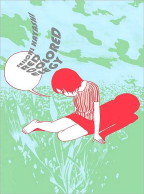 Red Colored Elegy
Red Colored Elegy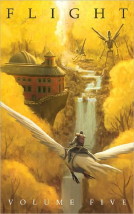 Flight, Volume Five
Flight, Volume Five It’s another one of those weeks when I have to shoo the kids away; this time, Manga Friday looks at three books about sex. (This is all fairly mainstream stuff, not hentai and without any tentacles to be seen. But there are still naked body parts doing their thing, however tastefully.)
It’s another one of those weeks when I have to shoo the kids away; this time, Manga Friday looks at three books about sex. (This is all fairly mainstream stuff, not hentai and without any tentacles to be seen. But there are still naked body parts doing their thing, however tastefully.)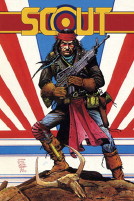 Scout, Volume Two
Scout, Volume Two








